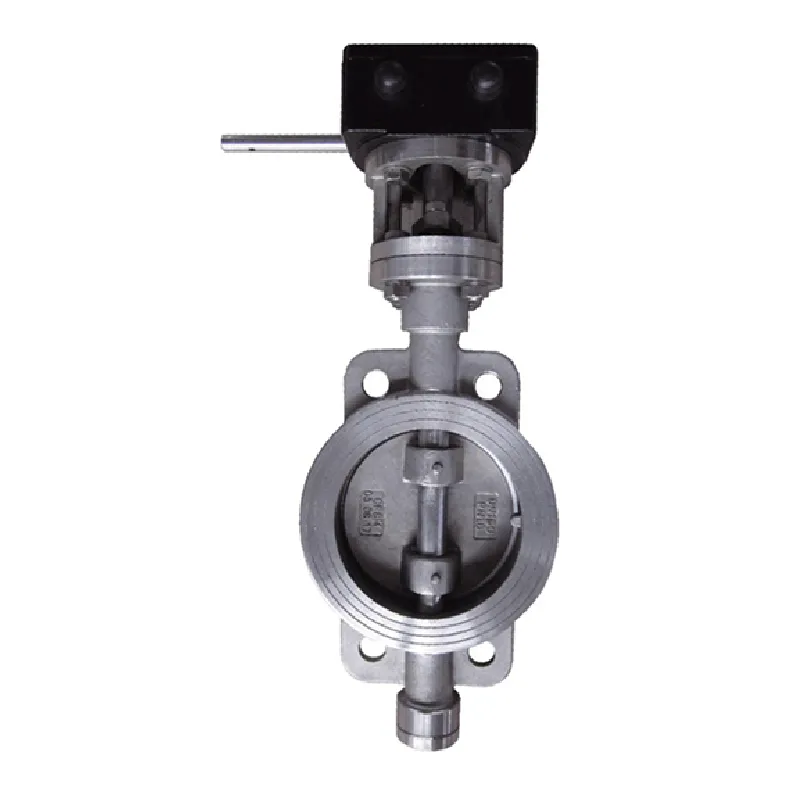10 月 . 10, 2024 21:14 Back to list
Pneumatic Actuated Ball Valve for Efficient Fluid Control in Industrial Applications
Understanding Pneumatic Ball Valves Functionality and Applications
Pneumatic ball valves are essential components in various industrial systems, enabling the efficient regulation of fluid flow. These valves are designed to operate using compressed air, making them highly effective and reliable in applications where precise control of liquid or gas flow is necessary. Understanding their functionality, benefits, and common applications is crucial for engineers and technicians working in fields involving fluid mechanics.
Functionality of Pneumatic Ball Valves
At the heart of a pneumatic ball valve is a spherical disc, or ball, with a hole through its center. This design allows for the precise control of flow by rotating the ball within the valve body. When the hole in the ball is aligned with the inlet and outlet ports, fluid can flow freely; when the ball is turned 90 degrees, the flow is stopped. This simple yet effective mechanism allows for quick shut-off and precise flow regulation.
The pneumatic actuator attached to the valve is crucial for its operation. Compressed air is supplied to the actuator, which moves a stem that is connected to the ball. Depending on the air pressure and direction, the actuator can open or close the valve quickly and efficiently. This enables rapid response times, making pneumatic ball valves ideal for applications where timing is critical.
Benefits of Pneumatic Ball Valves
One of the primary advantages of pneumatic ball valves is their rapid operation
. Because they can fully open or close in just seconds, they are particularly useful in systems requiring quick adjustments in flow. Additionally, these valves are robust and can handle high pressure and temperature ranges, making them suitable for demanding industrial environments.pneumatic ball valve

Moreover, pneumatic ball valves have a compact design and low torque requirements for operation. This efficiency can lead to reduced energy consumption, which is beneficial for both operational costs and environmental performance. The durable materials used in manufacturing these valves also contribute to their long lifespan, minimizing maintenance needs and downtime.
Common Applications
Pneumatic ball valves are widely used across various industries. In the oil and gas sector, they are critical for controlling the flow of hydrocarbons in pipelines. Likewise, in the water treatment industry, these valves help manage the flow of water in filtration systems.
In manufacturing processes, pneumatic ball valves can be utilized in automation systems for controlling air, gas, or liquid flow in machinery. Their precise control features are beneficial in production lines where consistent flow rates are required to ensure product quality.
Additionally, HVAC systems rely on pneumatic ball valves for regulating air and coolant flow, contributing to efficient climate control in buildings. Even in food and beverage processing, these valves help maintain hygiene and safety while ensuring the efficient flow of products.
Conclusion
In summary, pneumatic ball valves are integral to modern industrial systems, offering reliable operation and precise control of fluid flow. Their quick response times and durability make them ideal for a wide range of applications, from oil and gas to manufacturing and HVAC systems. As industries continue to evolve and demand greater efficiencies, the importance of pneumatic ball valves will only grow, highlighting the need for ongoing innovation and development in this critical technology.
Share
-
Understanding the Differences Between Wafer Type Butterfly Valve and Lugged Butterfly ValveNewsOct.25,2024
-
The Efficiency of Wafer Type Butterfly Valve and Lugged Butterfly ValveNewsOct.25,2024
-
The Ultimate Guide to Industrial Swing Check Valve: Performance, Installation, and MaintenanceNewsOct.25,2024
-
Superior Performance with Industrial Swing Check Valve: The Essential Valve for Any SystemNewsOct.25,2024
-
Industrial Swing Check Valve: The Ideal Solution for Flow ControlNewsOct.25,2024
-
You Need to Know About Industrial Swing Check Valve: Functionality, Scope, and PerformanceNewsOct.25,2024